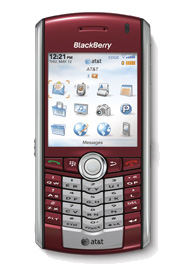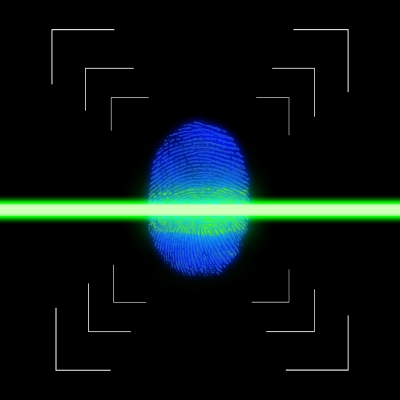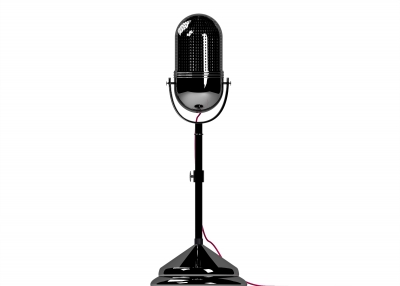-
- 26
Jan - (0)
Text–Nology
I admit it. I text. Almost everybody does these days.
Texting on your Smartphone is not a far cry from a professional in a behavioral health hospital or outpatient addiction treatment center keeping notes or other treatment documentation on the device. In fact, companies like New Mexico Software are developing medical record solutions for these devices at a record pace. I thought I’d investigate products that have been sold to professionals, are effectively being used and proven in the field.

I prefer the thumb-driven phone keyboard as opposed to the touch screen, probably because I’m used to it, and don’t want to get used to the new device. I’ve actually improved to the point that I can write a pretty detailed Email with fair speed. This gives me hope that using the small-screen environment to do real work is not just a pipe dream. Somewhere, it’s already happening, I’m sure professionals are writing their notes on their devices and somehow getting the note transferred from their phone to the Electronic Health Record (EHR) resident on the server of the agency they work for.
This prompts me to immediate suspicion…consumer confidentiality is a huge issue in our business, and I asked myself if HIPAA rules were being broken with this technology strategy? HIPAA is a rule that protects privacy of health information and is enforced by the US Office for Civil Rights.
I became quite frustrated looking into possible SmartPhone solutions, I found nothing conclusive. I ran across so many open ended arguments about the iPhone and iPad’s HIPAA security compliance, I decided to concentrate on the one I use, the BlackBerry. I ran across a fair source for the basics in the HIPAA Compliance Journal. Since Email is the foundation of electronic data transfer in the mobile environment, it seems a logical place to start exploring to determine whether the Smartphone is a secure enough device on which to keep or share consumer information. First of all, there may be no way to assure outgoing Email from a BlackBerry will remain secure, especially if it is forwarded to other treatment team members or to the consumer. Consumer information that’s quoted in Email is probably breaking HIPAA rules. This means the IT staff needs to be very savvy in order to assure the information makes it to the EHR without having to pass through public air space in an unsecured state if this technology is to be used.
The simplest thing to do is assure the entire Blackberry mobile network is set up in a secure fashion, to avoid insecure transmissions of data. This is just a matter of configuring the Blackberry with the Secure IMAP selection.
So, you say, that’s Email…what about documents like progress notes written on the Smartphone?
In a general sense, many mental health EHR software manufacturers offer mobile solutions. These are usually a service available on the Internet instead of software that’s installed on a mobile device, and come with secure methods of access. Using the software could be as simple for the user as launching an Internet browser on a Smartphone. The problem comes in with real estate. The Smartphone’s screen is too small for most professionals to find the environment effective to do any real work in the program.
Unless there is an App, a special, small program that installs on the Smartphone to deliver a screen that’s limited enough to perform a practical task like writing a note. I’m not aware of companies who have this capability up and running as part of their product, and would really like review the feature/functionality. Companies like New Mexico Software (above) are working on that.
So, if a mental health or addiction treatment professional wants this capability, it may come down either waiting for technology to catch up, or selling the idea to the folks they work for to develop it, simply because it falls into the bucket of software out there that’s “not ready for prime time” Hope somebody proves me wrong.
Oh, and about texting patient information? Make sure you have a secure environment that meets the HIPAA rule if you’re doing this.
Read more → - 26
-
- 23
Jan - (0)
Epidemic Treatment
Addiction to opiates is in epidemic proportions in many areas of the country. In Suffolk County, NY, it’s become so high-profile that the county launched an opiate epidemic advisory council seeking community help. Folks from all over the county have offered energy to help the community recover from this societal disease.

There are a number of methods of treatment, including 12 step groups, psychotherapy, hospitalization, and methadone, buprenorphine or suboxone for people requiring ongoing medication to overcome opiate abuse. I have worked with many methadone clinics over the years, and was happy to see that a number of clinics are working to improve their businesses…with the projected increases in people who need treatment, this improvement is vital.
According to NIATX, a group that helps mental health and addiction treatment organizations with their businesses, efforts have been successful in helping methadone clinics increase their capabilities to serve more people with opiate addiction problems. I was also glad to see that the solutions to making more widespread treatment available are served and improved by the Electronic Health Record (EHR).
Referrals Who knows who’s having trouble with opiates and is having difficulty recovering better than people in methadone treatment? Rewards were offered to consumers when they brought new folks needing help through the door. The program was effective enough to increase admissions at one agency by 53%. That sort of growth could create a minor problem: How do we track who brought whom through the door, and the rewards owed or delivered? A simple referral module in the EHR does the trick. After the fact, built in report writers can help evaluate long-term retention in treatment for people involved in this referral program…and save a lot of man-hours that might have been spent counting beans. Manual tracking of programs like this is seldom analyzed to determine effectiveness just because people are busy with their regular jobs and view analysis as busywork. Using computers to do that job makes sense.
Therapy Group In a number of states, Medicaid has switched to charging for each service delivered as opposed to a traditional method of a single fee that includes all counseling, medication or other services when a consumer walks through the door. Clinics are finding they need to offer different and separate types of treatment services, including group treatment. Groups require a two part note documenting both group focus and consumer focus, as well as scheduling to create a roster…a roster in the EHR saves time, increases accuracy of attendance and billing accounting. The note assures the team will know of emergent issues for consumers and assures they get more individual help if needed…not to mention fulfilling billing requirements. Another benefit of the EHR in this instance is the focus of the group; analyzing group notes can point out needs for therapy groups that focus on different topics.
Immediate Service The EHR can help manage inquiries by people needing help, including a quick scheduling for the consumer to talk with a counselor. The disease of addiction can make people rather impatient, so the quicker the service, the better. Central scheduling enables scheduling of appointments in the next empty time slot that works for both the consumer and a counselor. Without that up-to-the minute management capability, connecting the two can be difficult.
With opiate addiction in epidemic proportions, it only makes sense to help professionals deliver the highest quality care to the most people. Optimizing use of the EHR is a vital tool in serving more people in your neighborhood who might have a problem with medications like oxycontin or Vicodin, or street drugs like heroin.
Read more → - 23
-
- 16
Jan - (0)
Consumer ID
I remember odd stories of people being referred to professionals and treated for conditions they didn’t have because they were mistaken to be somebody else with an entirely different problem. Wrong medications can be delivered or professionals can act under false assumptions when working with the consumer. Confusion like this can be avoided with positive identification methods available to the Electronic Health Record (EHR).

A little over a year ago, Rand Corporation said that the Unique Patient Identifier would cost $11 billion, and pay off nationwide in reducing these sorts of medical errors, and in simplifying the nationwide effectiveness of the Electronic Health Record (EHR), which in turn can introduce a high level of efficiency, and a way to enforce patient privacy. Thank you, Rand. In the EHR manufacturing world, we’ve been selling these ideas for many years. Hopefully Rand and other high-profile companies will help make the nationwide Unique Patient Identifier a reality.
One important result of the nationwide Unique Patient Identifier for consumers would be patient confidentially, or so we’ve said for over a decade. Patients deserve to have control over who knows their mental health diagnosis or any information about their stay in an addiction treatment center. Typically, we’ve accepted we will be identified by a number, so what number do we use? The Veteran’s Administration uses the social security number, identifying VA Hospital patients by last name and the last 4 digits of their SSAN. I don’t know if that’s good or bad, but it certainly seems effective.
Occasionally we hear of breaches in confidentiality like the loss of a Veteran’s Administration laptop in May of 2007 with a gazillion veteran’s names and numbers on it…like social security numbers. That single event woke me up to how important it is for me to maintain the confidentiality of that particular number.
Let’s use my old pal Kenny as an example of how this “secret” and private number has been spread around. Who has Kenny’s social security number? Oh, everybody, it seems.
- Social Security Administration
- Internal Revenue Service
- Chase Manhattan, Bank of America, and every other lending institution Kenny’s done business with
- Verizon (there’s a mistake)
- Allstate, GEICO and every other insurance company he’s done business with
- Brookhaven, New York Presbyterian, and Ashland Community Hospital in Oregon, plus any other hospital that’s treated Kenny
- Dentists, optometrists, and other specialists from coast to coast
- Landlords, ex spouses and kids
In short, that secret number isn’t very secret, but it’s the closest thing that we have to an identifier. In my book, it’s time to abandon the idea of the social security number as a single identifier…it’s too compromised.
The solution for me seems to be technical. What’s done is done, and Kenny can’t do much about it. Perhaps you can. You don’t have to share your social security number with anybody…Verizon and the banks might argue about that, but it’s a law. These companies may not let you use their services and products as a result. No phone and no mortgage could be an inconvenience.
Signature pads have been in use for many years to validate consumer identity. A common software technology ties the signature to a patient ID. If consumer data needs to be shared with others, the patient signs for it, validating his Unique Patient Identifier. This assures the consumer is in control of who sees what. Without the signature, these entities who have your information can’t share it, and if they do, they are at great risk. Somebody could be open for a law suit or jail.
Voice technology, face identification, and retinal scans are a few other methods that can be used to validate Kenny is who he says he is, which is handy in the case of identity theft. Most of the organizations like credit bureaus and medical providers (probably your friendly neighborhood Community Mental Health Clinic) simply pair the SSAN with the date of birth, name and/or address, which is simple. Is that secure enough for you?
A solid, durable signature pad costs around $200 (the $100 model wears out quickly in a production environment and the $400 model with LED screens and interactive technology may be overkill). The other solutions cost a bit more, but so what? Technology is a pretty reasonable solution to assure nobody else is using a consumer’s ID, and confusing a person’s diagnoses and treatment with somebody else or spreading it across town or across the country without that person’s permission.
The simple point is, when it comes to treatment, maintaining confidentiality is tough and getting tougher as the National Health Record becomes a reality, and in the end, every citizen needs to take responsibility for the security of his ID. Keep your eyes and ears open, campers!
Read more → - 16
-
- 05
Jan - (0)
Remember Voice Technology?
Years ago, while vice president of a small Electronic Health Record company, the dream of speaking into a microphone and having progress notes magically type themselves came up in every presentation, and the answer was similar to today’s answer: “That’s not part of the product, and it’s very possible using a product like Kurzweil Speech Recognition software”. We considered integrating speech recognition into our product.

Even back then, it worked great once you got it set up. The software needed to know your speech patterns, your voice and such. Any idiosyncrasies brought into the mix like dentistry or an injured tongue or a strong accent really threw the software for a loop. Like I said, the software worked fine, it was the setup and changing patterns of our voices that could throw a monkey wrench in the works. Consequently, speech recognition software was seldom used…Oh, I almost forgot, you could have bought our company for what the voice technology cost, so we declined to integrate the product.
The technology is much better now, and still in our field, seldom used. There are a number of high quality systems on the market that are available for a reasonable cost, like Dragon software, (and I imagine Kurzweil, too). You don’t have to go far for examples of how the technology has advanced. Most automated telephone systems with voice recognition do a good job, and the system that bowls me over is the Long Island Railroad system at 718-217-5477. Sometimes on a cell phone under less-than-optimal conditions, you might need to wait a while the system “thinks” about your response, but it picks up from that point well. Voice technology seems to no longer need much coaching or training to deliver what ‘s needed.
In mental health and substance abuse facilities, people ask about this technology for the benefit of those who don’t type. I learned to type in high school. I was a healthy boy and that’s where the girls were. I liked being there and over the years typing became a stream-of consciousness phenomenon. I don’t touch a writing implement often these days. My suggestion throughout the years has been to learn how to type if the effort and price tag is too high for voice technology. In this age of texting, select boxes, templates and drop-down dictionaries, that opinion has to go. The technology seems to have arrived, and by purchasing Voice Technology software for a PC, speaking notes and having them automatically type into memo fields us usually a snap.
Traditionally doctors have been the ones who used voice technology, historically that means Dictaphones. Today, it means software like those mentioned above. Most EHR software will accept input from the software. As I understand, the computer changes the voice input into typed characters, and they look like standard keyboard input to most software when your cursor is focused on a memo field.
It’s only rocket science, and we’ve been doing that since the Chinese invented fireworks rockets, long, long ago.
Once a doctor or other mental health professional uses the software, the text will still need to be edited, since we don’t write like we talk…not a big deal once we get the hang of using it, and that usually means the person using the software has to do the editing. This eliminates the drudgery and expense of having somebody listening to the recorded message and type the notes into the EHR.
Call me old-fashioned. I like to type. If you know professionals who don’t, suggest they look into voice technology; it’s a new world.
Read more → - 05
